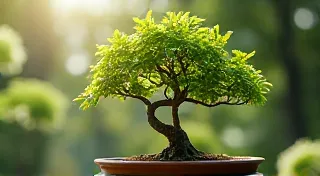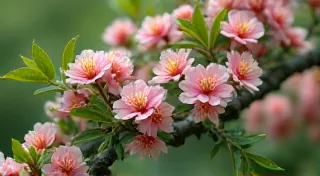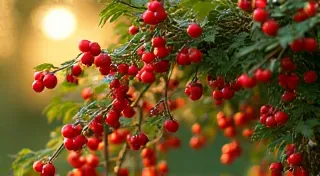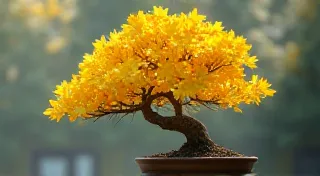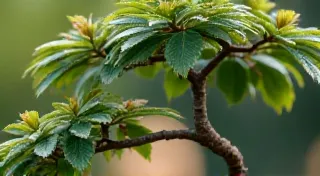Cotoneaster Bonsai: Maintaining Dense Foliage and Berry Production
Cotoneaster bonsai offer a unique combination of reliable foliage, vibrant berry production, and adaptability, making them a popular choice for bonsai enthusiasts of all skill levels. This guide delves into the specifics of caring for a Cotoneaster bonsai, focusing on techniques to promote dense foliage and abundant berry yields. Whether you’ve just acquired a new Cotoneaster or have been cultivating one for years, this article provides insights to enhance its beauty and health.
Understanding Cotoneaster Bonsai
Several Cotoneaster species are suitable for bonsai, including Cotoneaster horizontalis, Cotoneaster dammeri, and Cotoneaster congestus. While they share common traits, understanding subtle differences in their growth habits and preferred conditions can optimize their care. Generally, Cotoneasters are known for their resilience and tolerance of various pruning techniques. Their growth is relatively fast, making them ideal for shaping and training. They also perform well in containers, a crucial requirement for bonsai cultivation.

Essential Care Practices
Successful Cotoneaster bonsai cultivation hinges on consistent care across several key areas:
Light & Location
Cotoneaster thrives in full sun – ideally, at least 6 hours of direct sunlight daily. Insufficient light leads to weak growth, sparse foliage, and reduced berry production. If indoors, place your bonsai near a south-facing window and supplement with grow lights if necessary. Rotating the bonsai regularly ensures even growth on all sides.
Watering
Watering is crucial, but overwatering can be detrimental. The soil should be allowed to dry slightly between waterings. The frequency will vary depending on the climate, time of year, and pot size. During the growing season (spring and summer), more frequent watering is required. Check the soil moisture by inserting your finger about an inch deep; if it feels dry, it's time to water. Use filtered or rainwater whenever possible to avoid mineral build-up in the soil.
Soil
Well-draining soil is paramount. A standard bonsai soil mix consisting of Akadama, pumice, and lava rock is highly recommended. This combination provides excellent aeration and drainage, preventing root rot. The proportions can be adjusted slightly depending on your local climate; in wetter climates, increase the proportion of pumice and lava rock.
Fertilizing
Regular fertilization promotes vigorous growth and abundant berry production. During the growing season, use a balanced fertilizer (e.g., 10-10-10) every two to four weeks. Reduce or discontinue fertilization during the dormant season (fall and winter). Consider using a fertilizer specifically formulated for bonsai, as these often contain micronutrients essential for health and vigor.
Pruning
Pruning is essential for maintaining the desired shape and size of your Cotoneaster bonsai. Regular pinching of new growth encourages ramification and creates a dense, compact appearance. Structural pruning is best done in late winter or early spring, before new growth emerges. Remove any dead, damaged, or crossing branches. Wiring can be used to train branches into desired positions; remember to check the wire regularly to prevent it from girdling the branches.

Encouraging Berry Production
While Cotoneaster is generally reliable for berry production, specific conditions can maximize your yield:
- Sunlight: Adequate sunlight is the single most important factor.
- Fertilization: Use a fertilizer higher in phosphorus during bloom time (spring) to encourage flower and berry development.
- Pollination: Cotoneaster often relies on insects for pollination. While most varieties are self-pollinating to a degree, ensuring insect activity can improve berry set.
- Mature Tree: Berry production typically increases as the bonsai matures.
Common Problems and Solutions
Like any plant, Cotoneaster bonsai can be susceptible to certain problems:
- Spider Mites: These tiny pests can cause yellowing and webbing. Regular inspection and treatment with insecticidal soap or neem oil can control infestations.
- Aphids: Similar to spider mites, aphids can weaken the tree. Wash them off with a strong stream of water or use insecticidal soap.
- Root Rot: Caused by overwatering and poor drainage. Ensure proper soil mix and watering practices.
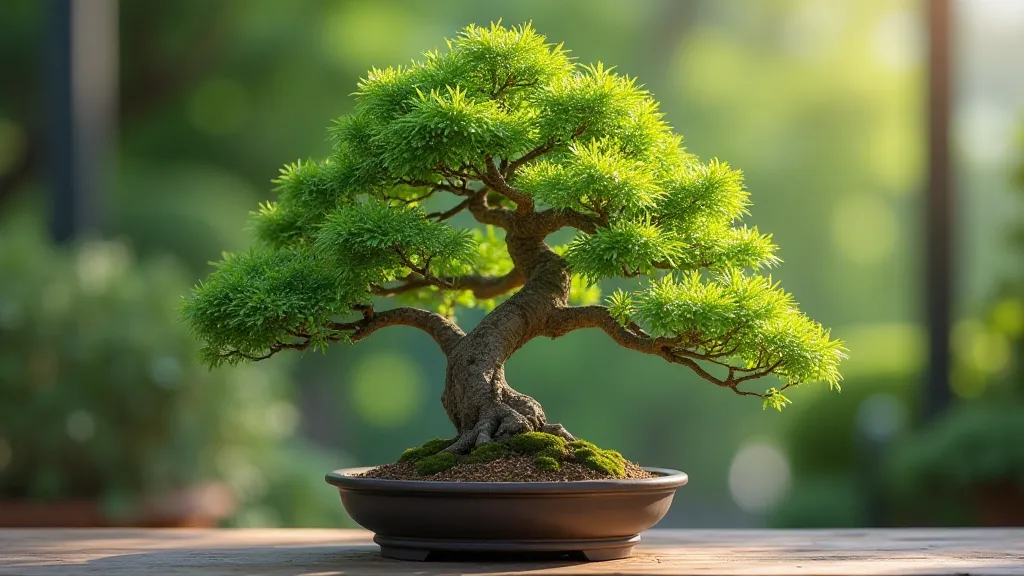
Conclusion
Caring for a Cotoneaster bonsai requires attention to detail, but the rewards – dense foliage and bountiful berries – are well worth the effort. By understanding the tree's needs and implementing the practices outlined in this guide, you can cultivate a stunning and productive Cotoneaster bonsai that will bring you years of enjoyment.
